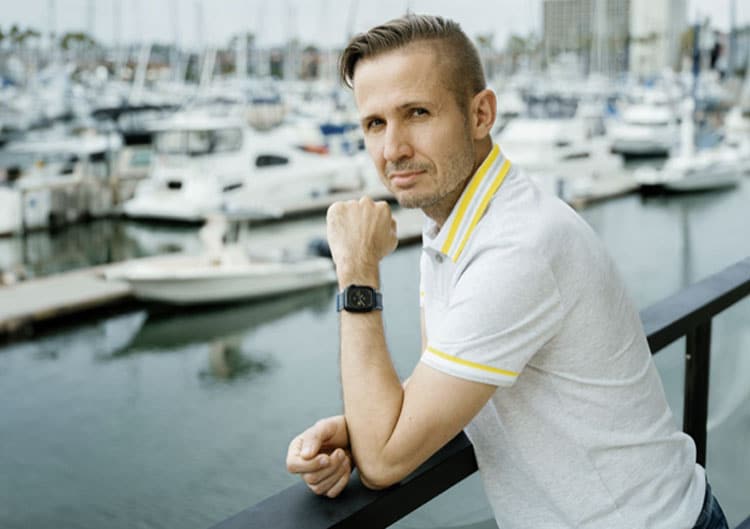Scaling in the era of globalization: Valentin Vasilevsky shares how to create a global business in online education

Valentin Vasilevsky is the co-founder and CEO of the Business Booster accelerator, the x100 Strategy mastermind and the Business Booster Platform, an IT platform for business management. Business Booster is an international accelerator with ready—made solutions for taking business to a next level with programs in four languages: English, Chinese, Russian and Ukrainian. Accelerator residents are companies from 63 countries with a total turnover of $ 3 billion.
Nowadays many companies focus their business locally, but you have decided to go international. What is the reason for this?
If you do online education, it means you are already international, you will automatically start having clients all over the world. The only thing that limits online businesses is languages. The Business Booster accelerator was originally an international one, because that’s how the nature of online businesses works. But our merit is that we have managed to reach other languages.
We wanted to do this because the size of the market for an online service is limited precisely by the number of people who speak the selected language. Our goal was to expand its size. The two largest languages we have entered are English and Chinese, which allow us to expand indefinitely.
What are the three main principles to follow in scaling online education to the global market?
The first is the localization of everything into the most spreaded languages. The second is creating your own IT platform, on which scaling will take place. The third is the use of AI for translations and creation materials for markets. The first two points are pretty obvious. But I will go through the third one, because we created the know-how on making high-quality content in other languages.
We created a scalable course factory with AI for our Taiwan branch, earning $3 million. The first tool is Whisper AI. This application allows you to transcribe audio or video from almost any language.
When you get a transcription, it needs to be translated into another language. To do this, we use Chat-GPT. I recommend using only the paid versions of the AI tools. The quality of the resulting text executed by Chat-GPT depends on the prompt.
After we have received the English translation, we need a “Human-in-the-loop”. This way we will check the texts for accuracy and coherence to be sure the translation is correct. We still need people, but only at some stages of the process.
The next tool is called ElevenLabs. It is used to clone your voice and generate it in another language. We enter a phrase in any language, and the voice is played. You can change some parameters, such as stability, or add different emotions. You won’t need a person here, at least a speaker.
When we have text converted to voice, we need an avatar. To do this, we use HeyGen. Here you can create two types of avatars. The first is an instant avatar. You shoot a video, upload it to HeyGen and get your avatar. The second option is a studio avatar, which requires a chromakey. You can place it on any background and change its clothes. If you look at the received video online, you will notice how the avatar and the uploaded voice are synchronized.
The next step after creating a video with your content, avatar and voice is slides and infographics. We used to work with designers who created slides manually. It took a long time and was quite expensive. Now we use Midjourney. We quickly create images for slides, websites, Youtube video covers, advertisements and documents.
The last step is to translate the text from English to Chinese. We use the Deepl translation app. I would recommend to forget about Google Translate and use only Deepl. It is very accurate, fast and will allow you to create your own dictionary and translate your special words. Afterwards, you need to combine the received materials into one video.
With the help of AI tools, you can create your own course in which you and your avatar will outline the mission, vision of the company, or transfer knowledge with almost no personal involvement.
What was the most difficult thing in scaling to other countries?
It is essential to understand local specific when scaling business oriented services. We spent several years trying to figure out the legislation in the USA. In order to work in the American market, you need to know how “W2” differs from “1099” or “Pass through LLC” from “Corporation”.
When we scaled Business Booster to Taiwan, we were lucky. We found partners who were local and knew the market, so we managed to grow much faster. We provided them with the product and sales technology, and they applied it and quickly began to grow, making a profit.
Moreover, the speed of adaptation and translation of content was difficult as well. But we are lucky that we have entered an era when it is possible to translate content using AI quickly, cheaply and in high quality.
What role has automation played in scaling your business to other markets?
Since 2012, we have been actively using Google tools in our work: Docs, Sheet, Slides and Meet. Many processes have been automated using them. When automation of our know-how and approach to management was required, we created our own Business Booster Platform, which now automates the functional structure, metrics, tasks and other tools. We continue to add and expand the functionality of the platform.
What would you advise a business owner who has just started to scale?
I would recommend building a management system. It is important for the owner to understand how management works, how to build a business operating system, employee training and transfer of experience, how to create a management culture in the company. This is what creates managers who develop and scale the business.
Have you read?
Best Universities In The World.
Best Fashion Schools In The World.
Most Innovative Countries in the World.
Countries by Average Wealth per Person.
Countries with the Highest Age Dependency Ratio.
Bring the best of the CEOWORLD magazine's global journalism to audiences in the United States and around the world. - Add CEOWORLD magazine to your Google News feed.
Follow CEOWORLD magazine headlines on: Google News, LinkedIn, Twitter, and Facebook.
Copyright 2025 The CEOWORLD magazine. All rights reserved. This material (and any extract from it) must not be copied, redistributed or placed on any website, without CEOWORLD magazine' prior written consent. For media queries, please contact: info@ceoworld.biz








